Mold growth is an insidious fungus that can be present both outside and in the home. Unfortunately, this fungal menace can cause major detriment to your health if left unchecked. In this write-up, we’ll answer the question: is it possible for black mold to spread from one residence to another? We will also provide some tips on how to prevent mold from spreading.
What is Mold?
When you have mold in your home, you may be wondering if there is any risk of it spreading to other homes or buildings nearby. The short answer is yes.
The key factor here is air flow: if the air currents carry spores of black mold from one location to another, then this could lead to an excessive growth of mold in other areas as well. Due to their small size and light weight, black mold spores are easily carried by the wind or dispersed through open windows.
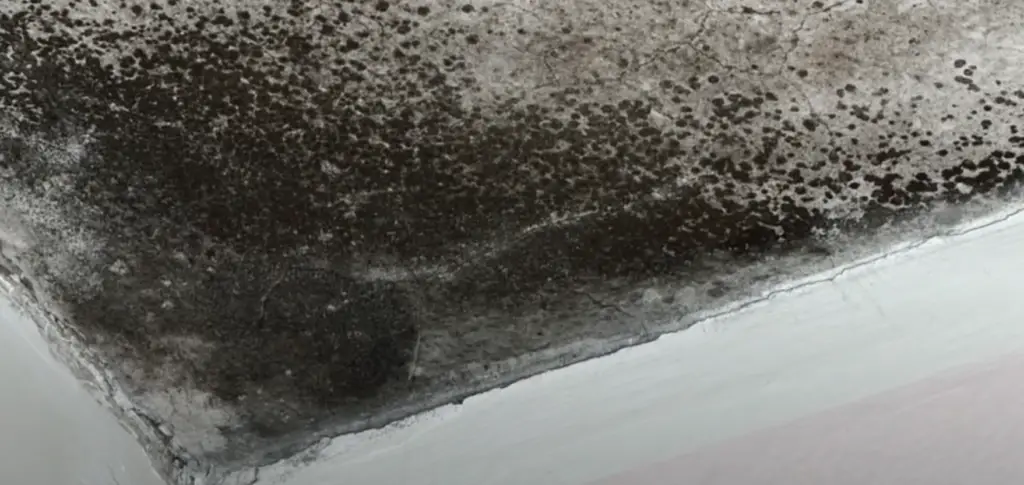
It’s important to remember that mold can spread not only from your home to other homes in the area but also vice versa. If you notice a large amount of black mold growing in an adjacent property, then this could mean that your own home is at risk of becoming infected too.
How Does Mold Grow?
Mold typically grows in damp, dark places with little ventilation. It most commonly appears on walls and ceilings, but it can also grow behind cupboards or furniture, under carpets and rugs, and on any surface that is not frequently cleaned and dried.
Mold reproduces through spores – tiny particles of mold which are released into the air. These spores spread easily through your home if they have high levels of moisture present, such as after a flood or when water seeps into areas you don’t often inspect.
So, if you have any mold present in your home, it’s important to ensure the area is well ventilated as this will help reduce the risk of harmful spores spreading further.
How to Prevent Mold Growth from Spreading
Mold growths can be incredibly destructive and dangerous, so it is important to take preventive measures to stop them from spreading. Here are some tips for preventing black mold from spreading in your home:
- Pay attention to any signs of water leaks or condensation in your home that can promote mold growth. Repair any plumbing issues promptly, and take the necessary steps to keep the humidity levels low in your home.
- Clean up any spills immediately and dry out wet areas thoroughly. By taking action now, we can protect our home from the continued accumulation of moisture and potential mold growth.
- Clean all surfaces regularly with a detergent solution, paying special attention to common places where mold often grows such as behind furniture, around windows, and in other areas of your home with high moisture levels.
- Maintain regular air circulation throughout the house by opening windows whenever possible. This will allow for fresh air to circulate and can prevent the growth of mold spores.
- Be sure to inspect any new purchases or furniture items before bringing them into your home to ensure that they are free from mold growth. [1]
It is important to take prompt action as soon as possible to stop it from spreading further. Taking these preventive measures can help keep your family safe and healthy while keeping the spread of black mold at bay.
Can Mold Travel From One House To Another?
When looking into the black mold spreading from one house to another, the answer is yes. Nevertheless, it’s not as straightforward as that may seem. While it is possible for mold spores to drift through the air and settle in another home, this typically doesn’t happen unless there are certain conditions present. For example, if a home with an active mold problem is situated close enough to another residence where airflow between them could be established, then it may be more likely for the spores to travel.
It’s also worth noting that most species of black mold (also known as Stachybotrys) don’t become airborne easily – so even if you do have a case of Stachybotrys in your home, it’s unlikely that the spores will travel far enough to cause problems for your neighbors. However, this doesn’t mean you shouldn’t take action if you do find mold in your house! It is still important to address the issue and prevent the further spread of the spores.
The best way to keep mold from spreading between residences is to practice good mold prevention techniques that limit moisture buildup and discourage the growth of mold in all dwellings. This can include fixing any plumbing issues that may be present, ensuring proper ventilation of rooms with high humidity levels, using a dehumidifier when needed, and regularly checking for signs of water damage or dampness around walls and windows. Additionally, proper maintenance should always be done to HVAC systems and other areas where mold may develop.
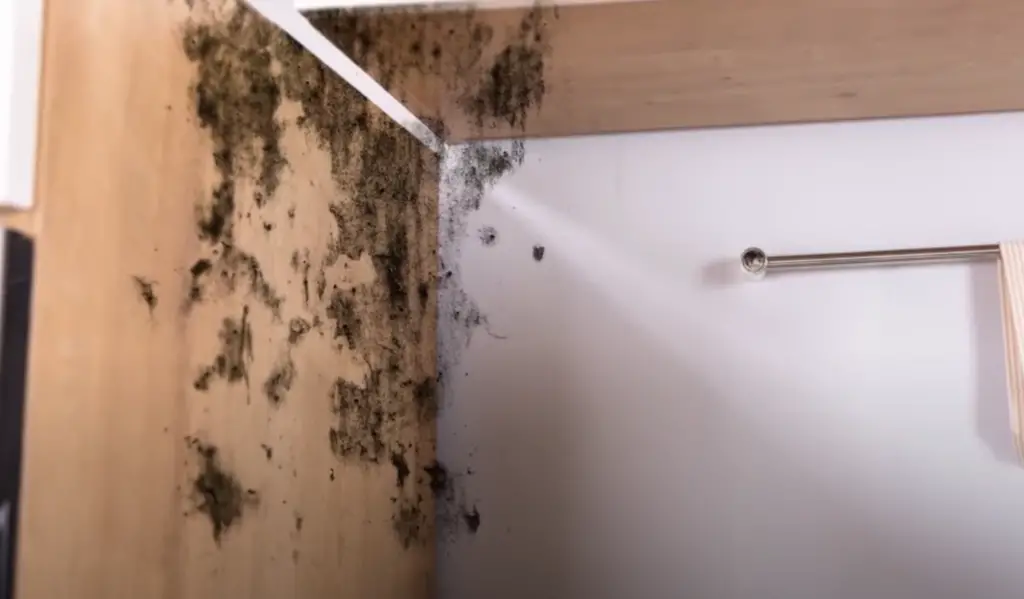
Overall, it is possible for black mold to spread from one house to another but this is typically only the case when certain conditions are present. In general, however, the best defense against a potential mold problem is prevention.
Can Someone Bring Mold Into My House?
It is possible that someone could inadvertently or deliberately bring mold into your home. The most common way that people can introduce mold spores into their homes is via clothing, shoes, and personal belongings that have been exposed to high levels of moisture outdoors. Additionally, if you have a friend or family member who lives in a damp environment (such as an apartment with water damage) then they could also be carrying small amounts of mold on them when they come over.
It’s important to remember though that not all types of molds are dangerous; some types won’t cause any issues even if transferred from one location to the other. However, black mold is particularly hazardous and should be avoided at all costs. Black mold spreads quickly and can cause serious health problems if it’s not taken care of immediately.
Symptoms Of Mold Exposure
Being exposed to mold can cause a variety of symptoms, and not all of them may be immediately detectable. Some people experience mild reactions through contact with mold, such as eye irritation or nasal stuffiness. Others may have allergic reactions which result in hay fever-like symptoms, including sneezing, wheezing, watery eyes, and a runny nose. For more serious cases of mold exposure, certain people may experience headaches, respiratory issues such as asthma attacks, skin rashes and even depression or fatigue.
If you are concerned that you might be experiencing any of these symptoms, it is important to see your doctor for an accurate diagnosis.
However, an allergy test is necessary to accurately diagnose a mold allergy and determine which type of mold is causing the allergic response. Depending on the severity of the allergens present in your home, your doctor may suggest treatments such as medications or immunotherapy.

Signs Of Black Mold
If your home has black mold, you may notice a musty smell even before you see the actual growth. The smell is usually strongest in humid or damp areas of your home where there’s poor air circulation, such as bathrooms and basements.
You might also find patches of discoloration on walls and ceilings. Black mold often appears as fuzzy greenish-black spots on walls, floors, and ceilings. It can also look like soot stains if it’s growing inside vents or duct systems.
Sometimes you may actually be able to see the spores floating in the air near any visible growth. If these spores become airborne, they can spread throughout your house quickly.
If you’re worried that the black mold may be a symptom of a bigger problem, consider having an air quality test done. A qualified inspector can tell you for sure whether or not the growth is actually black mold, and what kind of steps you may need to take to resolve the issue.
Mold And Your Ductless Mini Split
With ductless mini split systems, it is important to be vigilant for signs of mold growth. Ductless systems are susceptible to the same issues as central air conditioning and heating systems. The moisture from your cooling or heating system can create a hospitable environment for mold spores.
Not only can black mold be transferred between houses, but also through the ductless mini split system itself. If one home has a problem with black mold in their ductless system and another home uses the same unit, then it’s likely that the second house could become affected by the same issue. To prevent this from happening, make sure you regularly clean your mini split system and check for any signs of mold. [2]
If you recognize any signs of black mold, immediate action is essential. Call a professional HVAC technician and have them assess the situation. No matter what they decide, ensure you follow their instructions closely so that you can keep your home safe and healthy.
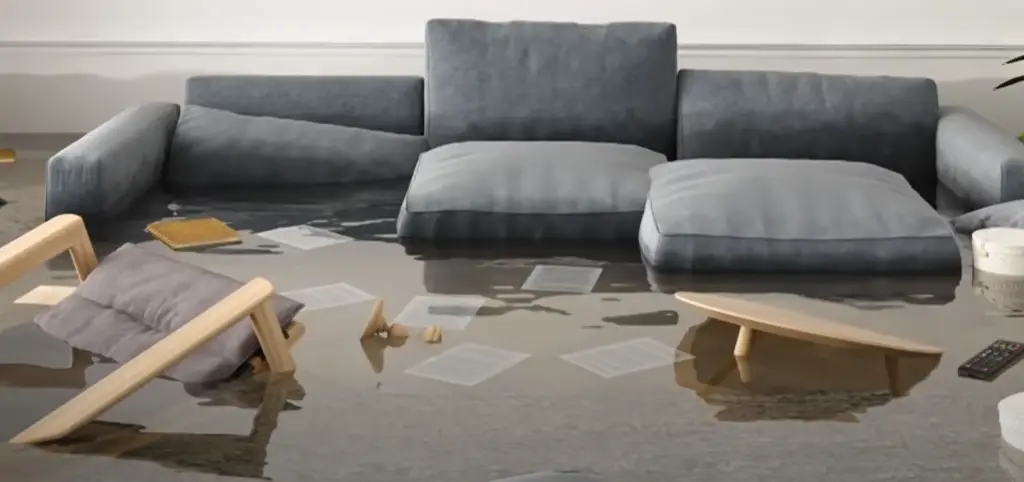
Make sure you take all the necessary steps to ensure your home and those around you remain safe and clean.
Prevention Tips
To prevent it from spreading from one house to another, there are some things you should do:
- Make sure that any leaks in your home are fixed as soon as possible. Leaks create a damp environment where black mold can thrive.
- Check for sources of moisture such as condensation, high humidity or water damage. Address these issues immediately so they don’t become an issue in your home or the homes of your neighbors.
- Ensure all ventilation systems are functioning properly and circulating air throughout the property. Poor ventilation can lead to elevated levels of moisture which will encourage the growth of black mold.
- Clean and maintain your HVAC system regularly. This will help prevent the spread of mold from one house to another by eliminating any sources of moisture in the air.
- Perform routine inspections of your home, paying extra attention to areas such as bathrooms, basements and attics where black mold is most likely to thrive.

FAQ
Do you have to throw everything away if you have black mold?
No. As long as the items have not been damaged by water or moisture and the mold has only grown on the surface, you can usually just wipe it away with a damp cloth. If your items are made of fabric, you could try laundering them in hot water and bleach to get rid of any remaining mold spores. However, if there is visible damage or signs that the mold has spread deeper into the item, then it may be best to throw it away altogether. [3]
How easy does black mold spread?
It is possible for black mold to spread from one house to another. The most common way this happens is through airborne spores, which can be easily carried in the air or on clothing and other items, such as furniture. In some cases, water damage in one home can cause black mold to grow and then spread through the walls of adjoining homes.
There are also ways that black mold could get into your home if you don’t take precautions against it. For example, if you buy furniture that has been stored in a damp environment where there is black mold present, it could bring those spores into your home. Additionally, if you buy secondhand items such as curtains or rugs from someone else’s home that has black mold, it could bring those spores into your home.
Make sure any items you bring into your home have been thoroughly cleaned and free of mold. Additionally, regularly inspecting walls or other areas where moisture may be present can help catch mold growth early before it has a chance to spread.
In general, the best way to prevent mold from spreading is to keep an eye out for signs of moisture problems in your home and take appropriate action to fix them. Additionally, being aware of potential sources of mold spores entering your house can help you avoid introducing them into your home. It’s also important to regularly inspect areas where water damage may have occurred or areas that are prone to moisture buildup. Doing these things can help you minimize the risk of black mold spreading from house to house.
Does black mold spread from room to room?
Yes, black mold can spread from room to room. Mold spores are nimble travelers, capable of being circulated through the air by heating and cooling systems, as well as drifting in from open doors or windows. It’s important to remember that not all molds are dangerous; however, if you suspect black mold growth in your home, it is best to take steps to contain and remove it as quickly as possible. [4]
How do you stop black mold from spreading?
The most important thing to do is identify and remove the source of the problem. Once you know where the black mold is originating from, you can begin addressing it. Here are some tips on how to stop black mold from spreading:
- Ventilate moist areas often – Make sure that any rooms that are exposed to moisture (like bathrooms and kitchens) are ventilated properly. Open windows or use exhaust fans to help remove humid air from these rooms.
- Fix plumbing leaks – Plumbing leaks can cause moisture buildup, so make sure to regularly inspect your pipes and fix any issues that you find.
- Use mold-resistant products – When installing drywall, tile, or other materials in areas that are at risk for moisture buildup, opt for mold-resistant versions.
- Clean and repair gutters – Make sure your gutters are regularly cleaned to avoid any debris from blocking the water flow. If you find any cracks or other damage to the gutter system, make sure to get it repaired.
- Control humidity levels – Keep the humidity in your home at a comfortable level (ideally between 45-55%) by using a dehumidifier or air conditioner. [5]
Useful Video: Black Mold – How To Kill Toxic Mold In Under 5 Mins!
Conclusion
In conclusion, black mold can spread from house to house but is unlikely to do so in most cases. The main way that black mold can spread is through the movement of spores, which are microscopic and can easily travel through air vents, windows, and gaps in walls. However, if a home has an infestation of black mold, it is important to take steps to get rid of it as soon as possible. This should include improving ventilation, cleaning up water damage, and using appropriate anti-mold products. If the growth still persists, professional help may be necessary in order to remove any existing colonies of black mold. With proper use of prevention methods, you can avoid spreading this hazardous mold from house to house.
If you have any further questions or concerns about black mold in your home, be sure to contact an experienced professional. They can help you determine the best course of action and prevent the spread of this hazardous fungus. With a little bit of knowledge and preparation, you can ensure that your home is safe and free of black mold.
References
- https://www.jwhomecare.com/how-does-mold-travel/
- https://hydrokleen208.com/black-mold-house-to-house-caldwell-id/
- https://www.angi.com/articles/should-i-clean-or-pitch-belongings-after-mold-removal.htm
- https://www.wawanesa.com/us/blog/3-signs-of-black-mold-and-how-to-get-rid-of-it
- https://www.cdc.gov/mold/control_mold.htm





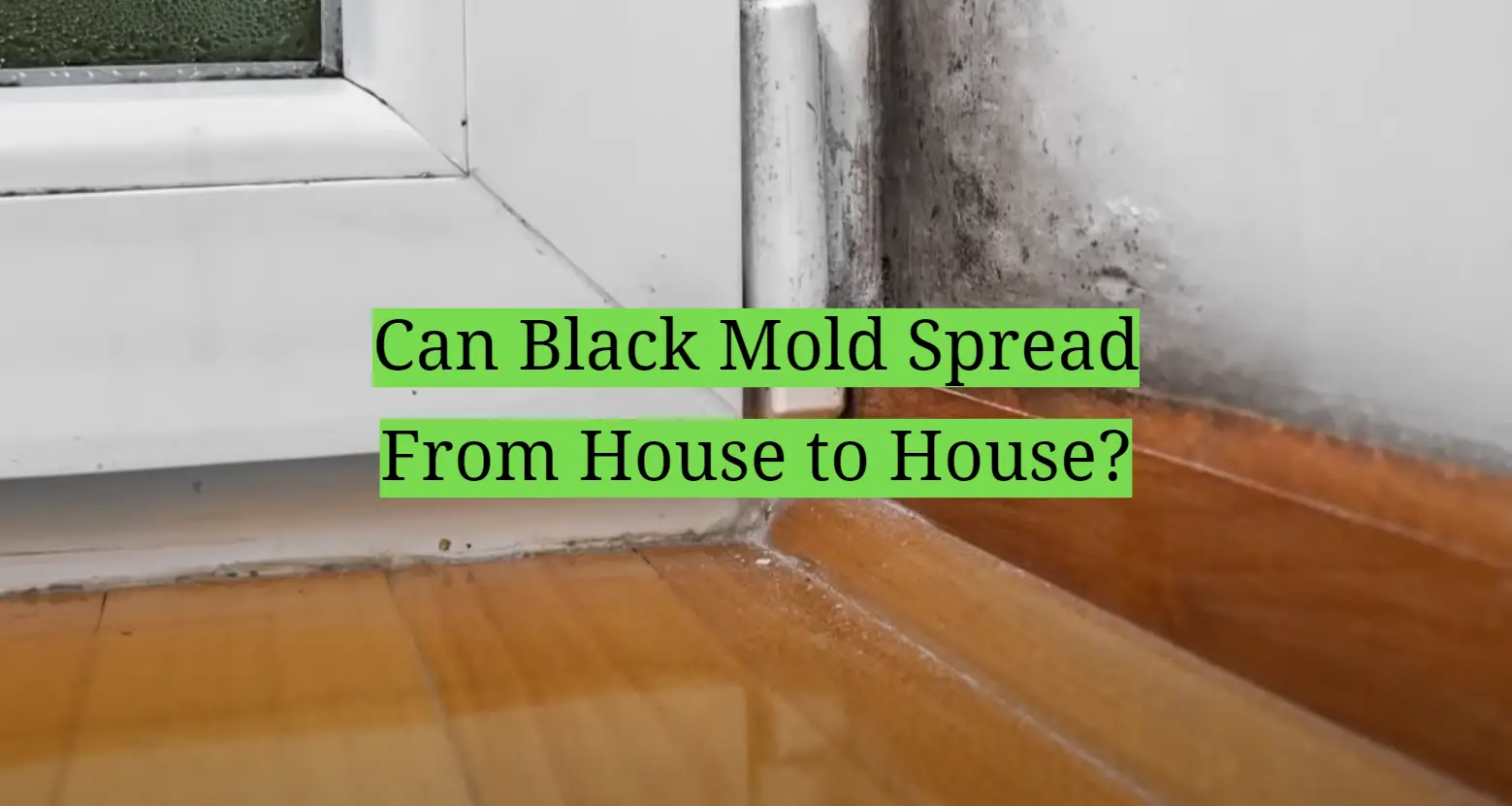

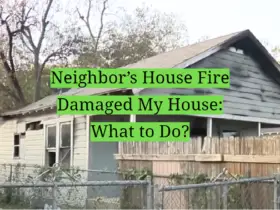


Leave a Reply